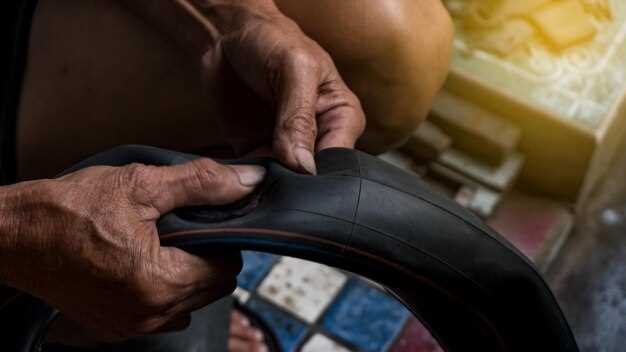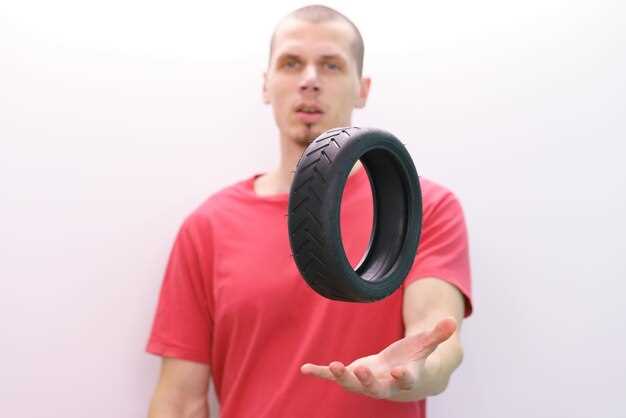
In the world of motorcycle racing, the right tire can be the difference between winning and losing. The performance characteristics of a tire, particularly its grip, are heavily influenced by the compound used in its construction. Understanding these tire compounds is crucial for racers aiming to optimize their performance on the track.
Tire compounds are formulated using a blend of rubber and various additives, which dictate their hardness, elasticity, and ultimately, their ability to provide grip. Softer compounds tend to offer better traction at the expense of durability, making them ideal for short races or qualifying sessions where maximum grip is essential. Conversely, harder compounds can withstand more wear, catering to longer races where longevity is a priority.
Diving deeper into the intricacies of tire compounds, it’s essential to recognize that the selection process is influenced by multiple variables, including track conditions, weather, and riding style. Each of these factors plays a significant role in determining the appropriate tire for a specific racing scenario, requiring racers to be well-informed and adaptable.
Understanding Different Tire Compounds and Their Uses
Tire compounds play a crucial role in motorcycle racing, significantly impacting performance, grip, and overall handling. The choice of tire compound can vary depending on the racing conditions, rider preferences, and track characteristics. Below are the primary types of tire compounds and their specific applications:
-
Soft Compound:
- Designed for maximum grip on warm surfaces.
- Provides excellent traction during high-speed cornering.
- Quickly heats up for optimal performance but wears out faster.
-
Medium Compound:
- Offers a balance between grip and durability.
- Suitable for a variety of track conditions including cooler temperatures.
- Ideal for longer races where tire longevity is crucial.
-
Hard Compound:
- Focuses on durability and longevity over grip.
- Good for tracks with abrasive surfaces or in endurance racing.
- Takes longer to achieve optimal temperatures, but retains performance over time.
In addition to the primary compounds, tires can also include variations such as:
-
Intermediate Compound:
- Engineered for mixed conditions, such as damp or changing weather.
- Provides moderate grip on wet surfaces while maintaining some wear resistance.
-
Wet Compound:
- Specifically designed for wet conditions, featuring deeper treads.
- Maximizes grip and prevents hydroplaning on wet track surfaces.
Understanding the different tire compounds and their uses enables riders to select the best option for their racing strategy, ensuring optimal grip and performance throughout a race. The right tire choice can significantly affect lap times and the overall racing experience.
Maximizing Grip: Choosing the Right Tire for Track Conditions

When it comes to motorcycle racing, the choice of tire is critical for maximizing grip on the track. Different conditions call for specific tire compounds and designs to ensure optimal performance. Understanding how tire grip is influenced by factors such as temperature, surface type, and weather conditions is essential for any racer.
In dry conditions, a softer tire compound generally provides superior grip due to its ability to conform to the track surface. This increases the contact area, enhancing traction during acceleration, braking, and cornering. However, these tires may wear out faster, necessitating a strategic choice depending on race length and individual riding style.
On the other hand, wet conditions require tires engineered with grooves designed to channel water away and prevent hydroplaning. These tires often sacrifice some grip compared to their dry counterparts but are crucial for maintaining control in slippery situations. Choosing the right tire in such conditions can be the difference between a podium finish and a crash.
Additionally, track surface characteristics–such as abrasiveness–play a crucial role in tire selection. A rough, abrasive surface can wear tires more quickly, requiring a harder compound to withstand the stress. Conversely, a smooth asphalt surface can allow for softer tires that maximize grip without excessive wear.
Environmental factors, including temperature, also significantly impact tire performance. As the ambient temperature rises, tire compounds often become stickier, enhancing grip. Racers should monitor the weather forecast and track temperatures closely, as this can influence their choice between soft, medium, or hard tire compounds.
Ultimately, understanding track conditions and how they interact with tire compounds allows racers to make informed decisions. By selecting the right tire suited for the specific conditions of the track, racers can maximize grip, improve their lap times, and enhance overall performance.
Maintenance Tips for Prolonging Tire Performance

Proper maintenance is essential for maximizing the performance and lifespan of motorcycle tires. Regular checks and adjustments can ensure that the tire compound retains its optimal characteristics for as long as possible.
First, regularly inspect the tire pressure. Maintaining the correct air pressure is crucial for optimal traction and heat management. Under-inflation can lead to excessive tire wear while over-inflation may reduce contact with the road, negatively impacting performance. Use a reliable pressure gauge to monitor tire pressure before every ride.
Second, perform visual inspections of the tire surface. Look for signs of wear, cracks, or foreign objects embedded in the rubber. Early detection of abnormalities can prevent more serious issues and extend the lifespan of the tire compound. Also, be sure to check for uneven wear patterns, which may indicate alignment or suspension problems.
Rotate tires regularly, particularly for street racers who may experience uneven wear between the front and rear tires. This practice can help distribute wear evenly across the tire compounds, maximizing overall performance and extending their usability.
Heat management is another critical factor. After racing, allow tires to cool down before storage. Storing tires in a cool, dry environment will help retain the integrity of the compound and prevent degradation. Avoid exposing tires to direct sunlight or extreme temperatures, as these conditions can adversely affect the rubber compounds used in tires.
Finally, consider the riding style and conditions. Adapting your riding techniques to match the tires’ capabilities can significantly influence their performance and lifespan. Avoid aggressive cornering and abrupt accelerations when possible, as these can accelerate wear on the tire compound.
